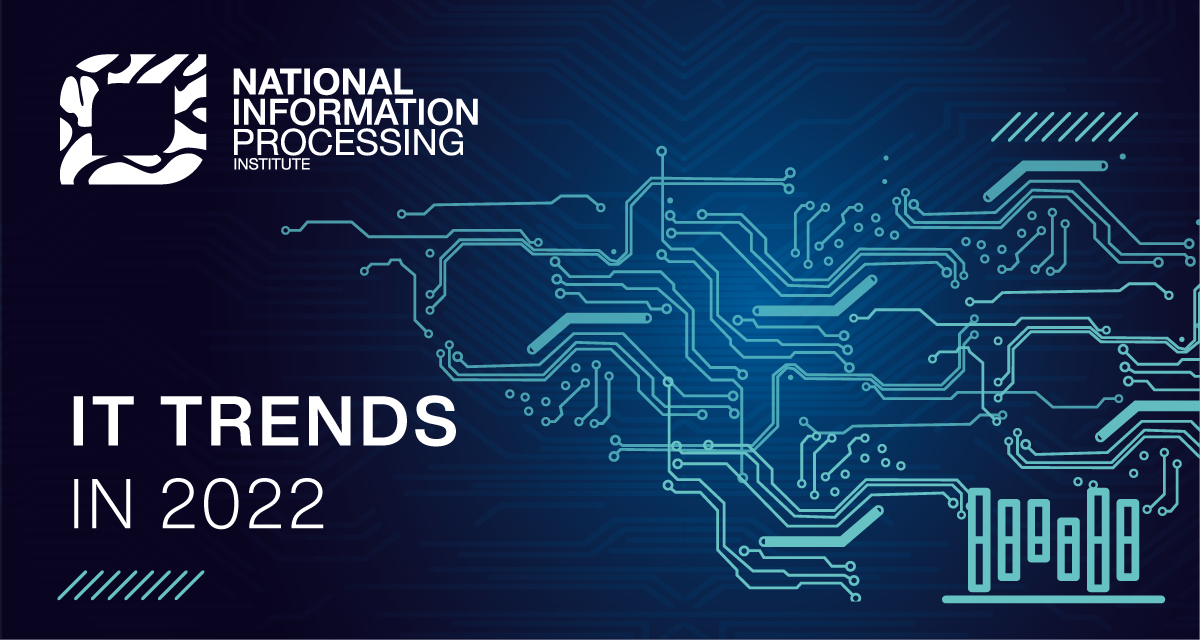The information technology (IT) sector is developing rapidly and is expected to continue doing so in 2022. State-of-the-art IT technologies will be used more extensively in business and science. Some areas of human activity will rely more than others on the achievements of the sector. In recent years, we have experienced staff shortages in some areas; as necessity is the mother of invention, these sectors must now implement innovative IT solutions. Although new technologies are unlikely to supersede human operators entirely, they will certainly help humans in their work. According to Dr Jarosław Protasiewicz, Head of the National Information Processing Institute (OPI PIB), the following three IT trends will merit attention in 2022:
Industrial digitalisation
Industry needs modern information technologies and will require better IT tools to prosper. This can be deduced from the amounts invested by industrial firms in implementing leading-edge technological solutions. Investment outlays are on the rise and this trend is unlikely to change in the foreseeable future. To maintain their competitive edge, market leaders must focus on digitalising their processes. In recent years, economic conditions in Poland have placed employees firmly in the driver’s seat, leaving employers struggling to find experienced staff. That is where modern tools come into play. The concepts of Industry 4.0 permeate a growing number of enterprises. The Polish economy is becoming more innovative every year. Internet of things (IoT) and artificial intelligence (AI) have already been put to use in firms that are extending their R&D units and collaborating with representatives of science. This is a positive trend for the Polish economy. We can also see it within the walls of our own institute: we are receiving offers to collaborate from an increasing number of entities. Interest has also grown in our Inventorum portal, whose goal is to bring business and science together. The portal stores data on over 60,000 projects that might be of interest to entrepreneurs. A pertinent example of the growing demand for modern industrial IT solutions lies in the collaboration between OPI PIB and VIVE Textile Recycling Sp. z o.o. The organisations are jointly conducting industrial R&D works to create an innovative process of footwear identification that utilises modern machine learning methods. Following completion of the R&D works, the VIVE Group will implement an innovative process that enables higher efficiency of the footwear pairing, wear and tear evaluation, and price assessment processes. Other goals of the project include the modernisation of the ShoeSelector experimental and production line, and the implementation of an automated, high-performance footwear identification process that will significantly reduce the amount of production waste. This will rely on the use of special image recognition algorithms.
Healthy artificial intelligence
Another trend that will not pass 2022 unnoticed is the application of AI in medicine and healthcare. Modern IT tools will be used more commonly to diagnose health conditions. Although AI is not going to supersede doctors, it will certainly make their work easier. As is the case in industry, specialists remain scarce in the healthcare sector. This results in long waiting times for appointments and delayed diagnoses, which can adversely affect the treatment process. AI accelerates the diagnostic process, which makes specialists’ work much easier. An excellent example of this can be found in the eRADS tool—a research platform developed by scientists at OPI PIB to standardise descriptions of medical reports. The platform enables radiologists to evaluate the clinical importance of potential cancer lesions objectively. It also facilitates the collection of medical test data, which will help solutions to be developed that automatically evaluate clinically significant characteristics. OPI PIB is working on another tool that supports disabled people. Sagacity will enable the management of everyday devices without the need to rely on traditionally understood motor and voice skills. Its implementation will allow individuals with functional disorders to become less dependent on their caregivers in performing routine activities. This will serve to enhance both their comfort and the state of their mental health. Sagacity is going to be the first system on the market that uses a wireless EOG/EMG amplifier to control devices that connect to smart home networks. A software platform will also be developed to identify and interpret the unique bioelectric patterns of each user. The new system will enable disabled people to perform many of their everyday tasks without extra assistance from their caregivers or guardians.
Computers and natural language The third and final trend is the growing popularity of neural language models. Such models are used in a range of industries and will be the subject of much interest in the years to come. The IT industry has long recognised their potential. Neural language models have been utilised by internet users for a variety of purposes. The models are necessary for text translation services, spam detection, gauging public opinion on the internet, automatic text proofing, and chatbot conversations. As a result of most models being developed for the English language, high demand has manifested for Polish-language equivalents. OPI PIB is dedicated to exploring this area. In 2021, the institute released two new models: the Polish RoBERTa base v2 and GPT-2 (which was designed to perform text generation tasks). In 2022 and beyond, we intend to explore this subject more deeply. OPI PIB provides its models free of charge, which we believe will stimulate the growth of the Polish IT sector. In addition to developing neural language models, we also implement various solutions that rely on them. These include popular IT tools, such as the Uniform Antiplagiarism System (JSA), which is used by all thesis supervisors in Poland, and Annobot, which is used to analyse human emotions based on fragments of text. In 2022, experts at OPI PIB intend to develop new algorithms that rely on natural language processing technology and will be applied in medicine.
